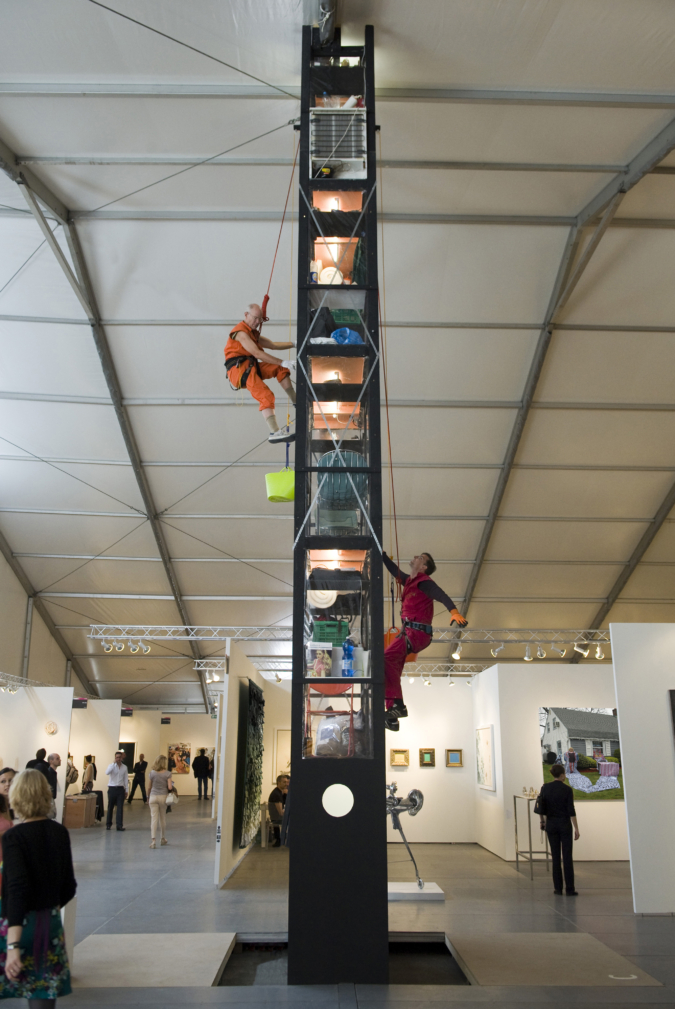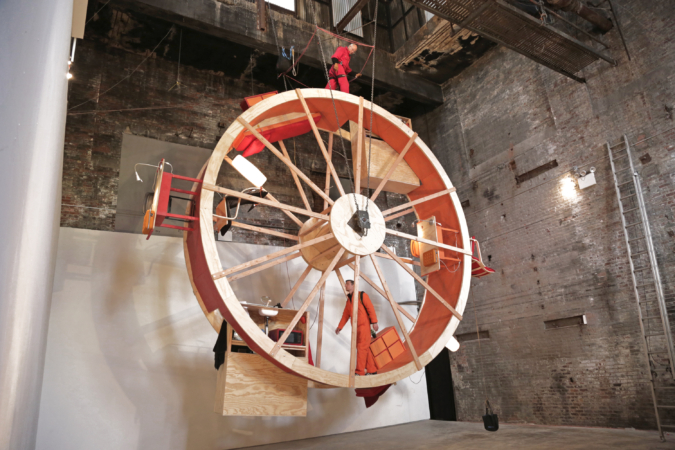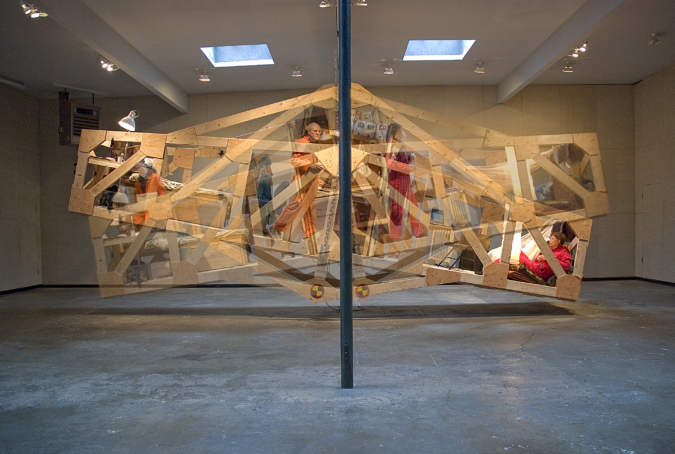Ward Shelley
Ward Shelley works as an artist in Brooklyn, New York. He specializes in large projects that freely mix sculpture and performance. Utilizing eclectic influences and a variety of media, Shelley’s installations defy classification. Over the last twenty years, he has concentrated on bizarre functioning architectural pieces in which he lives and works during the exhibition monitored with live surveillance video equipment. Shelley also works on a series of diagrammatic paintings, timelines of art and culture-related subjects such as the careers of artists working in de-materialized media and the history of art scenes. The best known of these are the Williamsburg Timeline Drawing, The History of Science Fiction, and Downtown Body, which was published in Bomb Magazine.
QUESTION:
You’ve constructed performative sculptures (that you call Performance Architecture) that pivot, quite literally, on the concept of balance. I’m thinking of Stability, in which you and another artist lived within an open seesaw, one side’s weight keeping the other afloat. Do you think about balance as a goal for your work, or a metaphor?
ANSWER:
These architectural-scale artworks you are referring to are nearly all made with my long-time collaborator Alex Schweder. We settled on the balance motif after making a piece that we, in retrospect, decided could have been improved if the structure itself formed a diagram of the dynamic experienced by the inhabitant/performers. Something that visitors would immediately see. Our project is about relationships and how form (architecture) shapes behavior. We are using bodies occupying constructed forms, but we are asking questions that are social in nature. We wanted the construction to immediately point to that.

Performance-architecture artists Alex Schweder La and Ward Shelley inhabit a self-contained living unit, tethered to either end of a single rope at the international contemporary art show Scope Basel, in Basel, Switzerland, on Friday, June 17, 2011. (Photo: Georgios Kefalas).
As in all social relationships and interactions, balance is a primary concern. It directs the flow, and has the potential to be fair or exploitive. Normally, architecture proposes solutions to practical problems. Our work begins with an absurd proposition and, having drained away any practical relevance in advance, we feel we are directly addressing meanings, not solutions.
Meanings are more fundamental to understanding. A solution is usually situation-specific. Meanings can be detached from a situation and used to redraw conceptual frameworks; they are useful multi-tools, and can be taken from one frame and used to understand or re-envision another. So, as to your question about balance, we use it as a metaphor, a diagrammatic abstraction that can be understood and re-assigned. Our point of departure is that balance is a proxy for for transactions, negotiations, and power in social relationships. But we like to keep it loose and indeterminate. We are open to other interpretations and spend much of our performances in conversations with visitors discussing what they see and think the work means. It is a great way to multiply your point of view.







